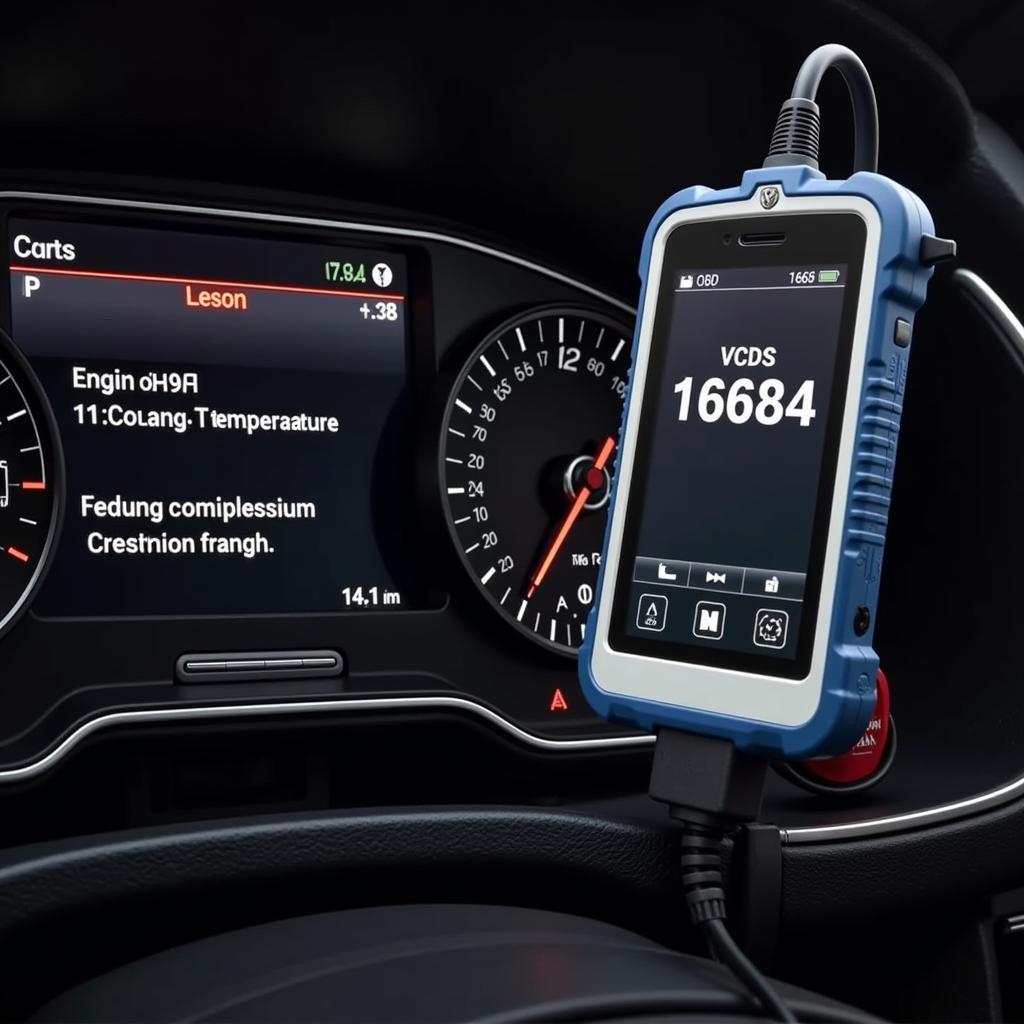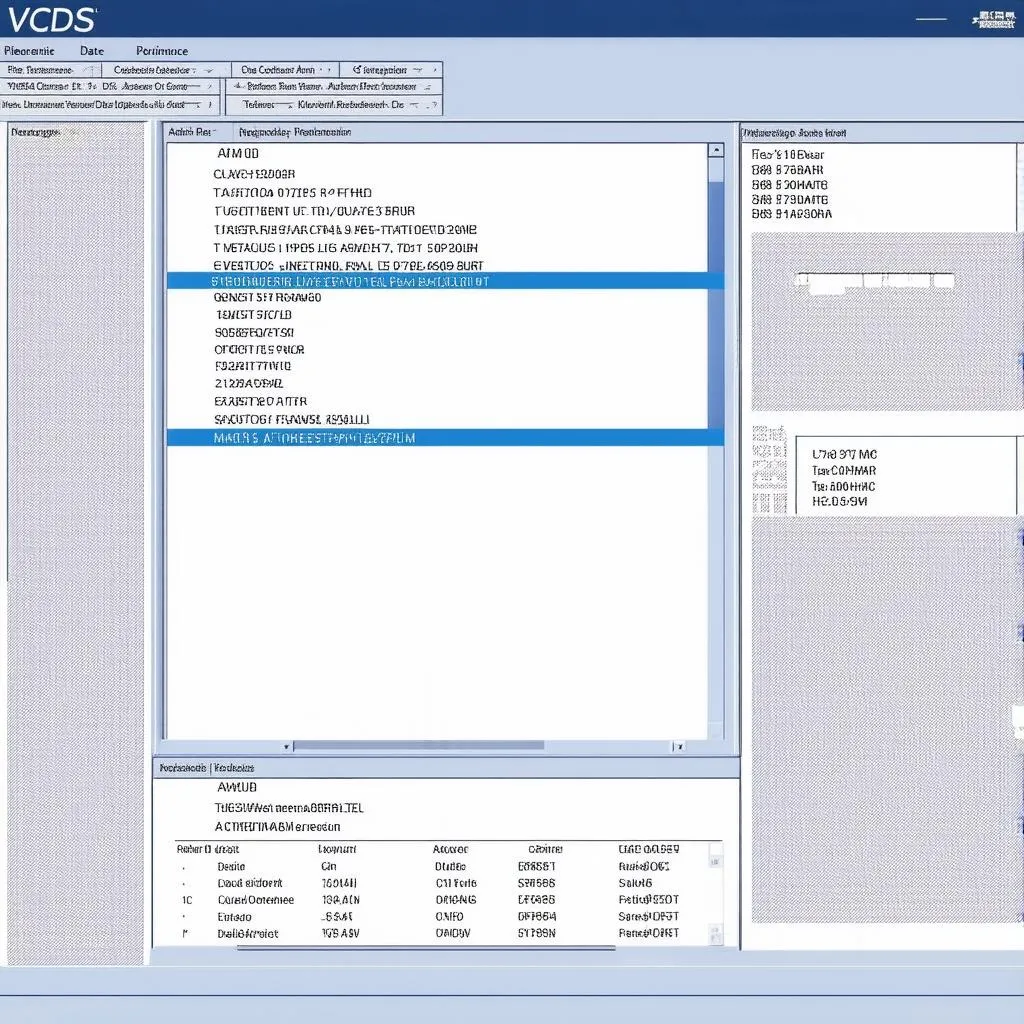Engine misfires can be a frustrating and potentially damaging issue for any car owner. A misfire occurs when a cylinder in your engine fails to combust the air/fuel mixture properly. This can lead to a loss of power, rough idling, increased emissions, and even catalytic converter damage. Fortunately, tools like the Ross-Tech VCDS (Vag-Com Diagnostic System) can be invaluable in diagnosing and pinpointing the cause of these misfires.
One of the most valuable features of VCDS is its ability to read misfire counters for individual cylinders. This data allows you to isolate which cylinder is misfiring and provides crucial clues for further diagnosis. Understanding how to interpret this data, along with other VCDS measurements, can save you time and money in repairs. Whether you’re a seasoned mechanic or a DIY enthusiast, this guide will provide you with a comprehensive understanding of how to use VCDS to diagnose and fix engine misfires.
Using VCDS to Identify Misfiring Cylinders
The first step in diagnosing a misfire with VCDS is to access the misfire counter data. Connect your VCDS interface to your vehicle’s OBD-II port and launch the software. Select your vehicle model and then navigate to the “Engine” module. Within the engine module, you will find measuring blocks (also known as measuring values). Locate the measuring block group that displays misfire counts for each cylinder. These counters increment each time a misfire is detected.
Observing these counters while the engine is running, particularly under load, will help identify the culprit cylinder. A rapidly increasing counter on a specific cylinder clearly indicates a misfire problem in that cylinder. You can also clear the counters and observe their behavior to confirm your diagnosis. Similar to 1.8t vcds misfire counter, the ability to track misfires in real time allows for dynamic testing and more accurate identification of intermittent issues.
What are common causes of misfires?
Several factors can cause misfires, including faulty spark plugs, ignition coils, fuel injectors, or even mechanical issues like low compression or vacuum leaks. VCDS can assist in diagnosing some of these issues by providing access to other relevant data, such as fuel trim values, oxygen sensor readings, and engine speed.
Beyond Misfire Counters: Using VCDS for Further Diagnosis
While the misfire counters pinpoint the affected cylinder, they don’t reveal the underlying cause. VCDS offers further diagnostic capabilities to help you narrow down the possibilities. For instance, you can monitor fuel trim values, which indicate how the engine computer is adjusting fuel delivery to compensate for variations in air/fuel mixture. Significant deviations in fuel trim can point towards vacuum leaks, faulty oxygen sensors, or fuel delivery problems.
How can I use VCDS to check my ignition system?
VCDS doesn’t directly test ignition components like spark plugs and coils, but it can help you isolate the problem. By monitoring misfire counts while swapping components between cylinders, you can determine if the misfire follows the suspected component.
Advanced VCDS Techniques for Misfire Diagnosis
For more advanced users, VCDS offers access to other data points that can be useful in diagnosing misfires. Monitoring oxygen sensor readings can help identify issues with the catalytic converter, which can sometimes be a consequence of prolonged misfires. This is similar to ross tech vcds manual, which provides detailed information about interpreting various sensor data. You can also use VCDS to log data from multiple sensors simultaneously, allowing you to observe how different parameters interact and potentially identify intermittent issues that might be missed during static testing.
Can VCDS measure compression?
While does vcds have an ocillioscope might be a question on some user’s minds, VCDS does not directly measure compression. However, by observing misfire patterns and other data, you can often infer if a compression test might be necessary.
In conclusion, VCDS is a powerful tool for diagnosing engine misfires. By understanding how to interpret misfire counters, fuel trim values, and other relevant data, you can effectively pinpoint the cause of misfires and take the appropriate corrective actions. This not only saves you time and money but also ensures the optimal performance and longevity of your vehicle’s engine. While VCDS provides invaluable diagnostic information, remember that it is just one tool in your arsenal. Sometimes, further mechanical inspection may be necessary to fully diagnose and repair the underlying issue. Similar to vcds 908, understanding how to use the software effectively is key to accurate diagnosis. For a comprehensive guide on utilizing the VCDS system, refer to how to use vcds vag com.
FAQ
- What does a VCDS misfire counter tell me? It tells you which cylinder is experiencing misfires and how frequently they occur.
- Can VCDS tell me why my engine is misfiring? VCDS provides data that helps pinpoint the cause but doesn’t give a definitive answer in all cases.
- Do I need to be a mechanic to use VCDS for misfire diagnosis? No, but a basic understanding of automotive systems is helpful.
- What other tools might I need besides VCDS to diagnose a misfire? A multimeter, a spark plug tester, and a compression tester might be needed depending on the issue.
- Can VCDS fix a misfire? VCDS is a diagnostic tool, not a repair tool. It identifies the problem, but you need to perform the repairs.
- What should I do if my VCDS shows multiple misfires? This could indicate a more serious issue and requires further investigation.
- How often should I check my misfire counters with VCDS? Regularly checking, especially if you suspect a problem, is recommended.
Need help with VCDS and misfires? Contact us via Whatsapp: +1 (641) 206-8880, Email: CARDIAGTECH[email protected] or visit us at 276 Reock St, City of Orange, NJ 07050, United States. We offer 24/7 customer support.


